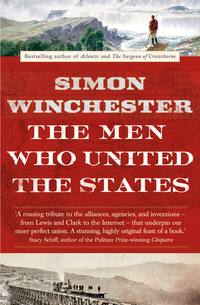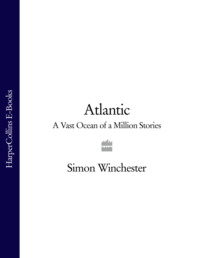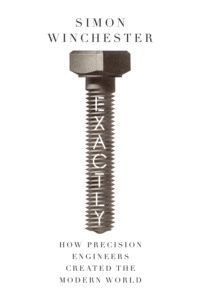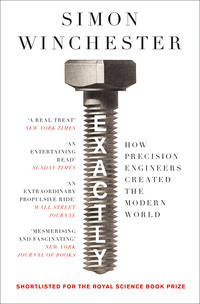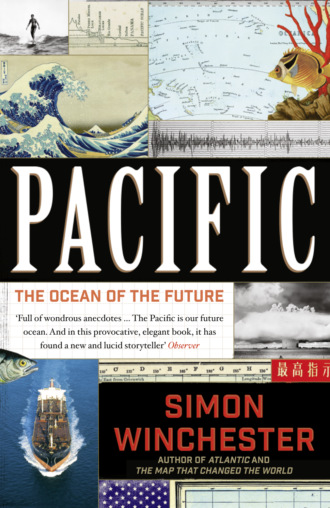
Полная версия
Pacific: The Ocean of the Future
I came across it while I was reading as much as I could about those two very early Europeans who had reached out first to see, and then to cross, the ocean that had hitherto existed only in their respective imaginations. The men have become legends: there was Vasco Núñez de Balboa, who first sighted its blue gleam below him from Darién in September 1513; and there was Ferdinand Magellan, who seven years later made transit across Patagonia through the strait that now bears his name, entered the Pacific, named it mare Pacifico, and then sailed clear across it into history (and, as it happens, to his own unanticipated and violent death).
Not surprisingly, the stories of both men have been told by many. As I was doing my own reading I came quite by chance and in quick succession across two accounts, both by the same author, that seemed possessed of a certain luminous quality, and were markedly different from all the others in scope, in scale, and in style. Both were by the Austrian author Stefan Zweig—a 1920s writer mostly forgotten now, though his appearance as “The Author” in Wes Anderson’s 2014 movie The Grand Budapest Hotel has lately revived his memory, somewhat.
It was Zweig’s succinct and poetic account of Balboa that I found particularly alluring. It was contained in a book, published in 1927, that has perhaps suffered under more titles than any book deserves. In its original German it was Sternstunden des Menschheit, or Great Moments of Humanity. The first English translation was The Tide of Fortune, and then came Decisive Moments in History, and most recently, Shooting Stars. But whatever the book was called, its essence remains the same: it was a slender collection of ten ruminative essays, each one turned to perfection, about what Zweig considered to be seminal moments in the tide of human experience.
The writer chose his subjects eccentrically, but always interestingly. Balboa’s expedition across the isthmus was first; the defeat of Napoleon at Waterloo another; Scott’s failed expedition to the South Pole, a third. He then wrote of Handel’s composing The Messiah, of the fall of Byzantium, the death of Cicero and the writing of “La Marseillaise.” He told also an extraordinary version of the saga of Lenin and the sealed train that had taken him through war-torn Europe to Finland Station, to stage his Russian Revolution. The result is a tumbling mélange of a book, quite charming and, even if perhaps lacking in academic rigor, one that quite transfixed me.
So after many attempts to corral the wealth of material about the Pacific Ocean into one manageable whole, I chose for this account to attempt to ape the master, to create a modified version of Stefan Zweig’s approach of almost a century ago. I decided I would sift through the events of the modern Pacific to try to find my own galaxy of shooting stars—of truly pivotal moments in the story of this vast acreage of ocean. I would choose a scattering of happenings each of which, to me at least, seemed to betoken some greater trend, and which might tell in microcosm a larger truth about the Pacific than the moments themselves suggest.
From a mass of such occurrences I could distill and weed and cull, and then decide which of the remainder truly said something significant about how the ocean, and the perception of the ocean, was developing and perhaps evolving: which events, in other words, indicated the direction in which the Pacific was shifting, as it moved to play its defining role in the future of the world.
So I made a list. I scoured newspapers and history books and databases and academic papers, and came up with some hundreds of more or less notable occurrences between January 1, 1950—a date chosen for a reason I will explain later—and the time I began to write this book, in the summer of 2014.
The cutting room floor was eventually to be buried under a blizzard of possibilities. I was fascinated, for instance, by the postwar reincorporation of the Japanese into the mainstream of Pacific life, and thought that stories from the aftermath of the notorious internment of Japanese American citizens might illustrate their welcome return to the world stage. I thought, more trivially, of the opening of a slew of Pacific Disneylands, first in Anaheim in 1955, then in Tokyo in 1983, and in Hong Kong in 2005, and wondered about the spread of America’s cultural impress on the people around and within the ocean. I thought about the lasting social consequences of the staging of Olympic Games in such Pacific cities as Melbourne, Tokyo, and Seoul. I wondered similarly about the social effects of invention of the Boeing 747-400, a plane made on the Pacific coast, an aircraft built specially to cross the entire ocean without refueling, in one bound.
The list went on and on. What of the significance of pollution—so poignantly symbolized by the Minamata disease that was identified in May 1956? What of the impact of the first television service that began in Australia, in September, four months later? Of the Watts Riots in Los Angeles that erupted in 1965? The My Lai Massacre that took place in Vietnam in March 1968, and the shooting of Bobby Kennedy in Los Angeles on June 6 of that same year? The time when more than seven hundred members of the Unification Church were married in a ceremony in Seoul in 1970, and when twenty-six members of the Heaven’s Gate cult neatly killed themselves in San Diego in 1997? What followed on from Richard Nixon’s visit to the People’s Republic of China in 1972—the first by an American president—and from Queen Elizabeth’s visit later on, in 1986? What of the consequences of the Chilean Communist Party’s formation in 1979? Or the disappearance of the “Dingo Baby” near Ayers Rock in Australia in 1980? The time when President Marcos was overthrown in the Philippines in 1985? The death of the last Hawaiian black-faced honeycreeper in 2004? News that a bridge had been built over the Eastern Bosphorus in Vladivostok in 2012? Or the curious time when Tonga, in 2014, signed a military agreement with the Nevada National Guard?
Rich though all this might be, there was still richer fare to consider. In the end, I chose just ten singular events, some of them portentous, some more trivial, but each appearing to me to herald some kind of trend. They showed, and in chronological order, a series of developments that, when accumulated as one, depicted an image, perhaps more pointillist than precise, of the ocean as it had arranged itself in the past sixty-five years; and that also hinted at the way the ocean might evolve through the near future. The wisdom or otherwise of these choices is what, of course, will determine whether this portrait of the ocean is judged to be fair and right. Naturally I hope it is considered so.
I decided to begin with the acceptance of a singular and distasteful reality: that the Pacific, despite what Ferdinand Magellan experienced when he first sailed into it, is anything but a pacific ocean; it is in fact, and more than any other, an atomic ocean. More dangerous than that, it is the ocean where most of the world’s thermonuclear weapons have been tested, and has been ever since the beginning of the story, in January 1950. The story of Bikini and of the hydrogen bombs then tested there allows for neither praise nor admiration. At the same time, though, it serves as a reminder of the terrible toll atomic weaponry has already exacted on humankind—mostly to innocent Japanese civilians, of course—and so is part of the ocean’s story, helping to define its past, present, and future.
Then, in a more cheerful vein, I chose the invention, four years later, of the transistor radio and the subsequent formation of the Sony Corporation. It seemed to me that these and other connected events of the early 1950s not only illustrated the energy, tenacity, and technical brilliance of the postwar Japanese, but also demonstrated the beginning of a pattern of eastbound transpacific trade that still dominates the ocean’s story to this day. Maybe the early Japanese technicians were eventually to be overtaken in some fields by the Koreans, and the Koreans in turn by the Chinese, but the endless procession of heavily laden cargo ships passing eastbound, inbound, beneath the Golden Gate Bridge is testament to a trend that was started by Japan, and to the long-ago makings of a tiny wireless set that would fit inside a cunningly enlarged shirt pocket.
Surfing—not so trivial as it may initially seem, just like the charmingly slight American film that made it popular in what would shortly become the biggest of all surfing markets—is a gift from the Polynesian Pacific that is today worth billions. This ancient, graceful pastime of wave gliding, once so central to the aristocracies of Hawaii and Tahiti, deserves proper consideration—in the same way that football and cricket must not be overlooked elsewhere—to help fathom the ocean in which it was born, and the peoples who gave it birth.
I have traveled in North Korea several times, and in 1987 was sorely frustrated in an attempt to walk the entire length of the peninsula when, after three hundred miles, my way forward was firmly blocked by frontier fences and a pair of burly American sentries. Once, and very briefly, I harbored some small secret sympathy for a North Korean regime that in its earliest days was guided by an intense desire to follow its own path to economic and cultural independence; now the regime has become such a byword for domestic cruelty and international insanity that it can hardly be ignored. Its role as perpetual irritant is an unattractive aspect of today’s Pacific, but a crucial one.
The reincorporation of Japan and the other native Pacific peoples—of American Indians, Australian aboriginals, Maori, and Pacific Islanders—into the running of their ocean’s affairs has been matched, in more recent years, by the steady, though seldom peaceable, withdrawal of colonial powers from the region. To begin this chapter, I chose one symbolic event, the sabotage and fatal fire on a British ocean liner in the waters of a British Pacific colony, to allow me to tell the stories of a number of colonists’ retreat: the French from Indochina; the Americans from Vietnam; the withdrawal elsewhere of the Dutch and the Portuguese; and from everywhere remaining, the otherwise near-ubiquitous British. The Pacific peoples are more firmly on their own at last, as they should have been for centuries past.
Except, maybe, in Australia. The role that this one continental country will play in the future remains a mystery to most—in Australia as among its millions of neighbors. Australia is an overwhelmingly non-Pacific nation on the western edge of the ocean: Does it fit? Can it fit? Will it exert a regional force for good, in the short term or the long term, or ever?
Then there are the more technical considerations: of the Pacific as the fons et origo of the world’s weather patterns; of the Pacific as the bellwether of the environmental dangers the planet as a whole must necessarily confront; of the Pacific as the epicenter of most of the world’s lethally dangerous tectonic mayhem; and in part as a consequence of that, of the Pacific as the source of almost unimaginably vast undersea resources, which the world can plunder or preserve as it wills.
Then, most crucially of all, there is China—the world’s most populous nation, fast ascending to the ladder tops, to the summits, of almost every measurable feature of modern humankind. This proud and ancient and imperturbable nation lies on the far side of the Pacific from America, the most powerful nation the world has ever known; it is easy to imagine that both are now glissading toward a rivalry and a possible confrontation that could easily end less than well for either party.
And then there is the sea itself, the fathomless expanse of vastness—of Robinson Jeffers’s “staring unsleeping Eye of the earth”—which the islanders know and care for, even if so many outsiders manifestly do not. The Pacific Ocean—now almost freed from its former European control, yet brimming with new disputes, a region that is tectonically and meteorologically dangerous—is in serious environmental peril, is ringed with nations undergoing immense internal change, is unimaginably busy with commerce, has come to be at the forefront of science and self-discovery, but is at the same time also peopled by many clinging tenaciously to its old ways, as well as by civilizations, East and West, that seem steadily to be beginning to understand one another, and all this is occurring in a setting of philosophical and spiritual renewal and among fantastic yet threatened beauty.
It is the most turbulent ocean in the world, and an expanse of sea that should be central to all our thoughts. Is the ocean to be a place of coming war? Is it to be our eventual savior, a place so beautiful and fragile that its sheer vastness will one day demand that we pause in our careless and foolish behavior in the rest of the world? Or will it be something in between: a pillar of hope and example and good sense poised between East and West, on which, for good or ill, we construct humanity’s future?
The book that follows is an account of this modern Pacific, the story of the development of the ocean in the sixty-five tumultuous years that began on January 1, 1950.
1 Statistics bear out the easily forgotten reality that whites—haoli, in the vernacular, a word uttered with some disdain—are a minority on the Hawaiian Islands. Their 336,000 (in 2010) are matched by almost half a million from countries around or within the Pacific Ocean, including 200,000 Filipinos and 185,000 Japanese. Eighty thousand only are native Hawaiians.
2 Tsingtao beer, its brewery long overseen by a German brewmaster, remains the most visible reminder of the kaiser’s historic influence in eastern China. While the beer retains the old Wade-Giles transliteration of its name, the city itself is now restyled Qingdao.
3 There can be few more impressive examples of German engineering than this eighteen-thousand-ton, thirty-two-knot (and exceptionally beautiful) warship, since she survived not only innumerable strikes by RAF bombers during the war, but also two nuclear tests in the Bikini atoll lagoon, where she was placed as a target for one air-dropped bomb and for a massive underwater weapon called Helen of Bikini. Still floating after the second test, but fiercely radioactive—all her crew would have died—she was towed to Kwajalein, developed a leak, and capsized, her enormous guns falling out of their barbettes and onto the seafloor. One of her screws has now been placed in a museum; the others remain visible at low tide. Prinz Eugen will never be salvaged, however, since her steel is still lethally contaminated.
AUTHOR’S NOTE: ON CARBON

New Year’s Day 1950 was a Sunday, and by and large, as the clocks ticked and chimed and boomed their way into the first year of the century’s fifth decade, the world seemed to have settled into a fairly stable place, with memories of the Second World War starting to fade, and scant suggestion of any of the turmoil soon to come.
The Japanese, still busily repairing their country and still occupied by American forces, had some small reason for good cheer that day, with the ending of their custom of declaring children to be one year old at birth and of everyone adding a year to his or her age each January 1. This change meant that all eighty million Japanese would not become numerically older on this day: a forty-year-old would wait until his next actual birthday before becoming forty-one. For a brief while that morning, all Japanese were said to have suddenly felt younger.
There was smaller cheer for New Yorkers. The canned music that had flooded the concourse of Grand Central Terminal for the previous three months, and that had whipped silence-loving commuters into a mutinous fury, was turned off, and forever. Riders on the New York Central regained their sanity; the calm of the everyday hubbub was resumed. For a while, some relieved New Yorkers were said to feel suddenly younger, too.
And in England, a teapot lid maker named Elizabeth Hulme and a man from Lancashire named James Jackson, whose job was listed as “mule spinner,” said to be a textile-related occupation, were each given awards for the contributions they had made to these crafts, in a ceremony at Buckingham Palace. In Britain nothing else of great significance occurred, according to the day’s newspaper accounts.
Beyond, in the outside world, most of the men of note then charged with running the world could count on remaining some time yet in power. Truman, Atlee, Stalin, Adenauer, Franco, Tito, Perón—even comparative newcomers such as Kim Il Sung and Mao Zedong—were all, for now, lying easy in their beds. There were similarly complacent kings and queens and princes in abundance, from Egypt to Tonga and Kathmandu, together with an emperor in Japan, a shah in Persia, and a grand duchess in Luxembourg, mostly respected, occasionally revered, and all, for now, reigning in comparative comfort.
Yet there were shifts in the wind. The grandest of the world’s monarchies was still England’s, with the incumbent, King George VI, still technically able to say that he reigned over a quarter of the world’s population, with his empire still in rude good health. Except that just three weeks into the New Year, his hold on one of those dominions would weaken when, as expected, Jawaharlal Nehru proclaimed India to be a republic. And farther still around the world, a little-known Vietnamese Communist named Ho Chi Minh would, at the year’s beginning, commence a series of negotiations with China and the Soviet Union that would eventually ensure that the French would be turfed wholesale out of Indochina, and would leave Asia forever.
But these small hints aside, if cracks were beginning to appear in the settled order of the world, they were only hairline, visible to few, and troubling to almost no one.
Except, that is, for one development that is still marked indelibly on that New Year’s Day of 1950, and that came to be regarded in a pair of ways: as being, first, of the gravest moment and, second, of lasting, perhaps even everlasting, scientific significance.
Three months previously, on September 3, 1949, a Geiger counter mounted in the nose of an American B-29 weather-monitoring plane that was flying reconnaissance missions in the western Pacific between Yokota in Japan and Eielson Air Force Base in Alaska, began to chatter furiously. Puzzled technicians swarmed to examine the records and soon determined that atomic radiation seemed to be pouring into the sky, from somewhere.
Two days later a second plane, based in Guam, flew over the same route and picked up signs of even more radioactivity: barium, cesium, and molybdenum fission isotopes were found in the upper atmosphere, signatures that suggested that either there had been a nuclear accident somewhere to the east of the plane’s track or someone had exploded an atomic weapon.
It turned out to be the latter. An atomic bomb known in Russia as First Lightning and elsewhere, eventually, as Joe 1, had been exploded by Joseph Stalin’s Soviet Union five days before, in an experiment conducted at a hitherto unknown and subsequently top-secret nuclear test site at Semipalatinsk, in Kazakhstan. The successful exploding of the bomb, which was modeled on, looked uncannily like, and was in fact slightly more powerful than the plutonium weapon dropped by the Americans four years previously over Nagasaki, stunned the outside world. Few Americans and few of their allies thought the Soviets would be able to catch up with the United States in terms of nuclear capability for many more years. But as was discovered a decade later, Moscow had a spy in Los Alamos, Klaus Fuchs; and though debate continues to this day about how valuable the information was that this brilliant young Briton passed to the Soviets, it is generally agreed that, perhaps more than any other spy before or since, Klaus Fuchs changed world history.
For by allowing the Soviet Union to construct nuclear weapons, and ultimately to make hydrogen bombs and all the other terrible paraphernalia of the nuclear age, his gift of secrets permitted the Cold War between East and West officially to commence—with the consequence that for the next half century, and perhaps for longer still, the planet lived in the shadow of the very real possibility of nuclear annihilation.
There was another consequence of this development, however—that to this day is of great significance to the scientific community and, as it happens, has some bearing on the structure of this book. It concerns radioactive pollution.
The explosion in the atmosphere over the coming Cold War years of hundreds upon hundreds of atomic bombs—big and small; fission and fusion; to be launched by missiles or dropped by aircraft or fired from guns; made by the United States, the Soviet Union, Britain, France, China, Israel, India, Pakistan, North Korea, or perhaps Iran—would contribute to the pollution of the earth’s atmosphere by myriad poisonous and radioactive decay products. Until atmospheric testing was banned in 1963, the world was living under a blanket of increasingly radio-polluted air, with effects that would be likely to last for thousands of years.
Crucially, one of the many products created by atomic explosions is the unstable radioactive isotope of carbon known as carbon-14.
This isotope is already naturally present in the world (its presence caused by cosmic ray bombardment), in extremely tiny but measurable amounts. Compared with the amount of normal, nonradioactive carbon-12 in the air, about one part in a trillion is carbon-14.
Plants absorb this carbon during photosynthesis, and animals that consume the plants absorb it, too. So while an animal or a plant is alive, its cells contain both carbon-12 and carbon-14, and in the same ratio as exists in the atmosphere.
However, once the plant or animal dies, its cells stop absorbing carbon—and at that precise moment, the ratio of the two isotopes begins to change, for the simple reason that carbon-14 is unstable, and begins to decay. The isotope has a half-life of 5,730 years, meaning that after that period, half of it will have vanished. After another 5,730 years, half of what remains will have disappeared, and so on and so on. And, it is important to note, the changing ratio of carbon-12 to carbon-14 in the dead animal or plant can be very accurately measured.
What followed this discovery—first made in 1946 by a University of Chicago chemist named Willard Libby, who would win the Nobel Prize for it—was the realization that by measuring the amount of carbon-14 remaining in a dead creature or plant, it should be possible to date, and with some precision, just when that plant or animal died. Thus was born the technique of carbon dating, and it has been in use ever since, a vital tool of archaeologists and geologists in determining the age of found organic materials.
The technique requires one constant, though: for any age calculation to be accurate, the baseline ratio of naturally occurring carbon-12 and carbon-14 has to be a real baseline—it must, in other words, stay the same as it always has been. The figure accepted by Libby and his colleagues and used as the base was the aforementioned one to a trillion: one atom of carbon-14 to one trillion atoms of carbon-12. With that figure firmly in place, the age calculations could be made, and reliably.
But then came the unexpected. As soon as the testing of atomic bombs began in earnest in the 1950s, that baseline figure suddenly began to change. The bombs created immense mushroom clouds of lethal chemistry. They thrust, among other things, a sizable amount of extra carbon-14 into the atmosphere, upsetting the baseline figure and causing the dating calculations suddenly to go awry.
Radiochemists around the world monitored the situation, and as the levels of new carbon kept increasing, test by test, year by year, they kept on writing algorithms to correct the distortions caused by the bombs. But as more and more bombs produced more and more unstable carbon, the situation was fast becoming complicated, irritating; and for a world that placed value on near-absolute precision, it threatened to render age determinations so inaccurate as to be useless.




